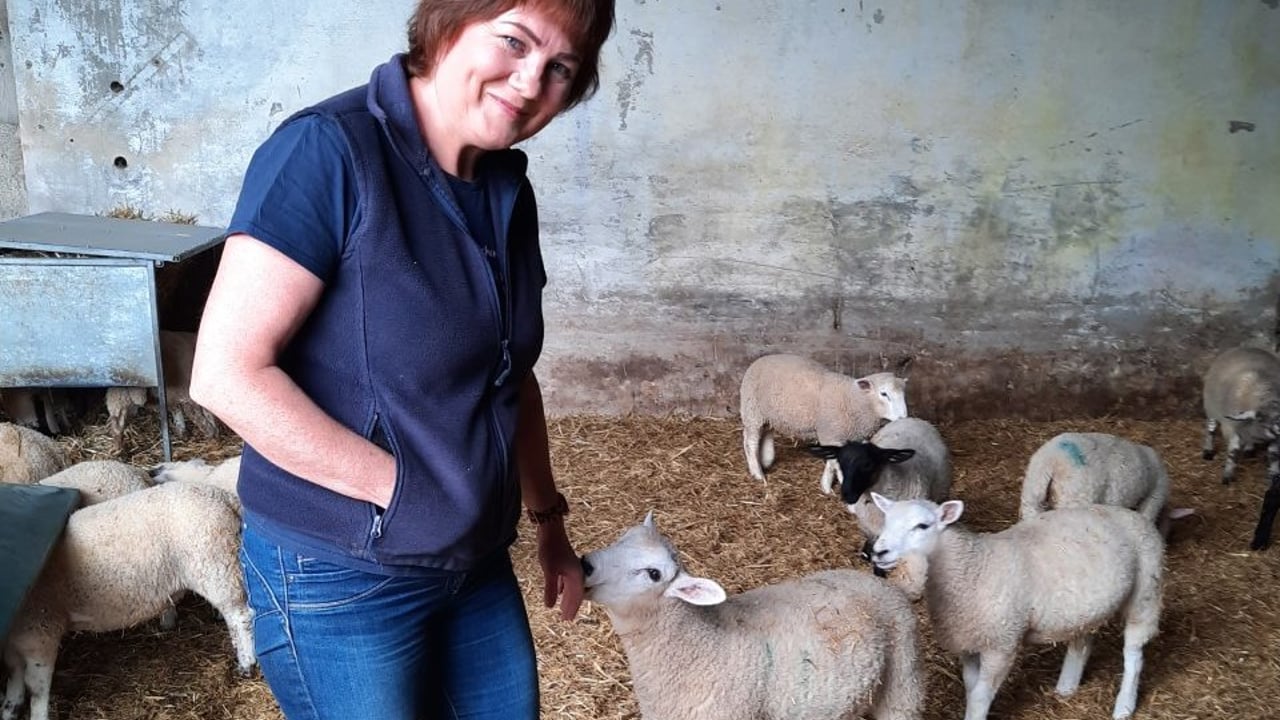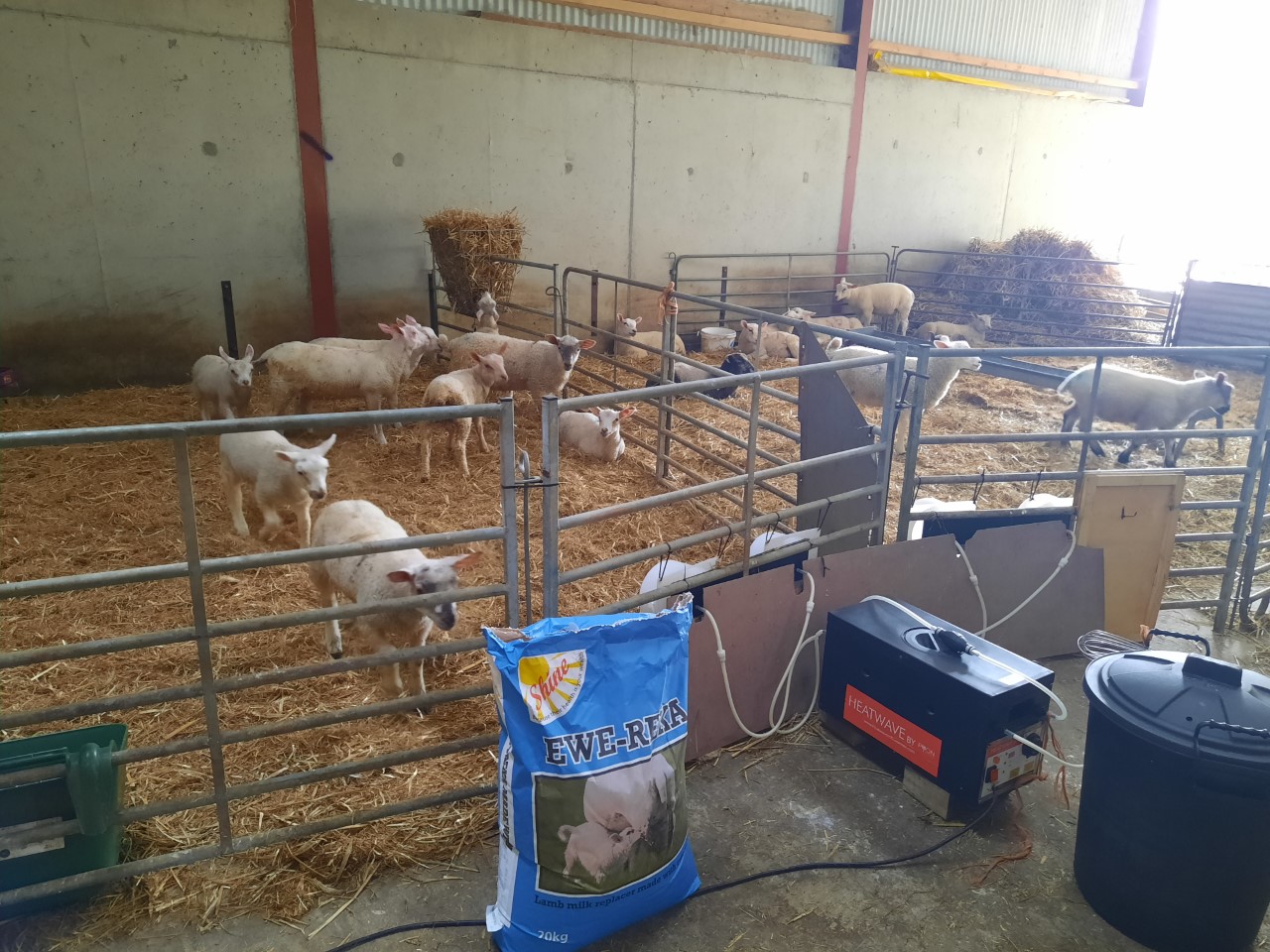Sponsored Article

Sponsored Article
Nutrition and hygiene standards key to successful lambing
Sponsored Article

Applying high standards to nutrition and hygiene at the rearing stage has resulted in exceptional pet lamb performance at a Co. Derry farm, with just one mortality in the group of 55.
Malcolm and Iris Maxwell and their sons, James and Adam, run a flock of Lleyn-Texels, Lleyns and Mules at Boveva Hill Farm, Dungiven, where they also farm beef cattle and broiler chickens.
Iris, who is in charge of rearing the pet lambs, says the key to rearing is attention to detail, a good milk replacer and top-notch hygiene.
“The key to success really is good nutrition from the get go, a lot of patience and excellent attention to detail,’’ she says.
Lambing gets underway at the end of March and runs until May 1.
In 2021, Iris reared 54 pet lambs, which were either born as a triplet or from first time lambers.
She feeds these lambs Shine Ewe-reka, which she describes as the closest product she can get to their mothers’ milk as it is made from ewe milk.
It is in fact the first lamb milk to be made with ewe milk.
“I have been using it for three years now and the lambs perform extremely well in terms of health and growth,’’ says Iris.
Ewe-reka contains five vegetable oils – coconut, linseed, rape, soya, and palm – and the ewe's milk minimises clostridia bloat and scour in young lambs.
A priority for Iris is to ensure lambs receive adequate colostrum within the first 24-48 hours of birth to protect them from disease.
“To make sure even the smaller weak lambs receive colostrum I purchased a hand pump to collect colostrum from the ewe and manually fed the lamb,’’ she explains.
“The motto that disease prevention is always better than cure is how we operate where possible.’’
Iris rears lambs on an ad-lib system using a Heatwave milk warmer.
A large barrel of cold reconstituted milk powder can be mixed cold and fed on demand.
“Ewe-reka milk replacer is a lot easier to mix cold or warm than any other product I’ve used in the past,’’ says Iris.
Ad-lib milk feeding allows for better growth rates, especially in the early days when lambs are at their most efficient at converting feed into growth.
On average, the pet lambs at Boveva Hill Farm drink around 10kg of powder on this system.
They have access to four teats and older lambs are separated from younger animals to avoid bullying in the pens.
Dr. Amanda Dunn of Bonanza Calf Nutrition said a lamb thrives best when fed little and often.
“Three to four times a day during the first few weeks of life is the gold standard,’’ she says.
Iris sets the Heatwave to warm the replacer to 20°.
“I find the lambs are less prone to bloating if they are fed tepid milk as they tend to gorge if the milk is very warm," adds Iris.
Iris mixes Ewe-reka milk replacer according to the manufacturer’s instructions, mixing it at 20% solids dry matter - 250g of powder with 1L of water - to mirror the solids level in ewe milk.
Consistency is extremely important when feeding pet lambs, Dr. Dunn says.
Iris trains the young lambs on warm milk and lowers the temperature as they get older.
“It is important to spend some time with the lamb for the first few days to ensure it has found the teat and suckled adequate volumes of milk three to four times a day,’’ Dr. Dunn continues.
On average, Iris’ lambs weigh over 30kg at 10 weeks, equating to a daily liveweight gain of approximately 400g/head.
“These weights are as good, if not better, than twin lamb weights reared on their own mother,’’ Dr. Dunn adds.
Hygiene is paramount when it comes to artificially rearing pet lambs because they are vulnerable – if they are a multiple they usually have a small birthweight and colostrum can be in short supply.
“Keeping tubes clean and flushed out regularly is vital to success as a build-up of stale milk can encourage bacteria to grow,’’ says Dr. Dunn.
The tubes of the feeder are washed on a daily basis without fail. Iris also keeps the bedding and feeding areas separate.
“It’s much cleaner and drier this way, allowing the lambs to be comfortable and healthier as a result,’’ she says.
Lambs are provided with fresh meal, clean water and eat straw in racks from the first week of life.
It is important to introduce them to dry feed early to allow for successful weaning when milk is removed, says Dr. Dunn.
Iris generally weans abruptly at between 5-6 weeks, depending on dry feed intake and growth performance.
Due to the exceptional cold conditions last spring, she kept the oldest lambs inside and finished them on meal and straw instead of grass.
The lambs have access to a creep feeder where they can graze ad-lib. The 54 lambs jointly consumed 70kg of meal/day.
Iris has a very impressive mortality level, losing just one lamb out of the original 55.
“Rearing pet lambs is labour intensive and some require extra TLC but the ad-lib feeding system is great,’’ she concludes.
Sponsored Article







